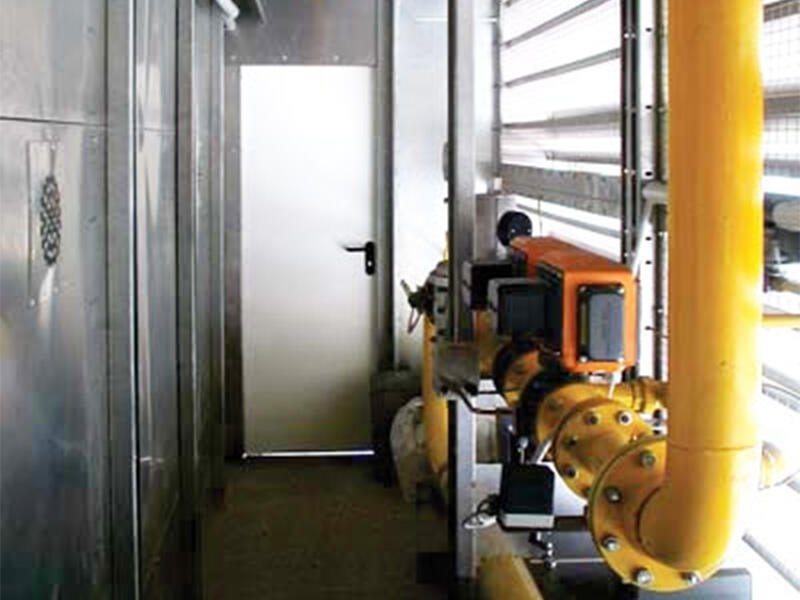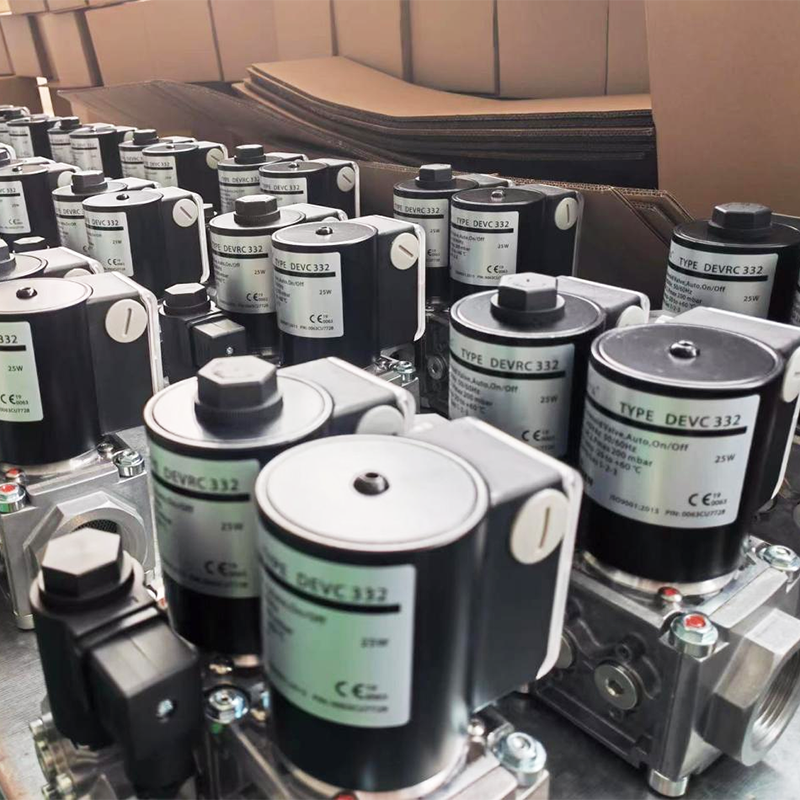The Role of Excess Air in Combustion Processes
The amount of extra air in boiler burners plays a big role in how efficiently they actually work. Basically, this refers to the extra oxygen that gets added beyond what's needed for the chemical reaction between fuel and air, which helps make sure everything burns completely. But here's the catch – even though some extra air is needed for full combustion, having too much can really eat into fuel costs and increase pollution levels. Getting these levels right makes a noticeable difference, cutting down on those harmful nitrogen oxides by around 30%. Finding the sweet spot between air and fuel isn't easy. Too much extra air means losing heat through the stack, while too little leaves carbon behind that didn't get burned properly. Industry standards show pretty wide ranges depending on what fuel source we're talking about: usually somewhere between 5-10% for natural gas, 5-20% when using fuel oil, and all the way from 15-60% for coal systems. These numbers highlight why operators need to adjust their settings based on specific fuels if they want both better performance and lower environmental impact.
CO2 Concentration as a Key Performance Metric
Looking at CO2 levels is really important when checking how well boilers burn fuel. When there's plenty of CO2 in the exhaust gases, it means the fuel burned completely, so the system works efficiently. On the flip side, if CO2 readings are low, that usually points to incomplete burning somewhere in the process. According to recent studies from the American Society of Mechanical Engineers, accurate CO2 measurements give technicians valuable information about whether combustion is happening properly and what kind of environmental footprint the boiler might be leaving behind. Most plants use flue gas analyzers nowadays to track these concentrations because they offer pretty reliable data for making adjustments. Beyond just improving efficiency numbers, these readings form the backbone of training programs for boiler operators across many facilities. When workers learn to read and understand their CO2 meters, they can tweak burner settings on site to keep things running smoothly while saving money on fuel costs and reducing harmful emissions at the same time.
Optimizing Excess Air for Maximum Fuel Utilization
Ideal Excess Air Ratios for Different Fuels
Getting the right amount of extra air for different fuels like natural gas versus heavy oil makes all the difference when it comes to burning stuff efficiently. Most guidelines point to around 5 to 10 percent extra air needed for natural gas, whereas fuel oils generally require between 5 and 20 percent. These numbers matter because they help make sure everything burns completely without wasting heat, which translates into actual money saved on energy bills. Industrial facilities that keep these ratios in check often see noticeable improvements in how well their gas burners work. We've seen cases where not enough air gets mixed in during combustion leads to fuel usage jumping up about 15%, which hits pockets harder and pumps out more pollution too. Following what the experts say about these ratios helps companies get better performance from their equipment while cutting down on wasted resources and harmful outputs.
Balancing Oxygen Levels and Heat Loss
Getting the right amount of oxygen into combustion processes makes all the difference for how well things burn and how much heat gets lost along the way. When there's just enough oxygen present, combustion works better because it cuts down on wasted heat that would normally go out through excess air and disappear into nowhere. We've seen plenty of examples where companies messed up their oxygen management, leading to energy losses sometimes reaching around 20%. That kind of inefficiency adds up fast. The fix? Monitoring systems need to work in real time so adjustments can happen when needed. New tech is coming online that actually does this stuff automatically now. Sensors detect oxygen levels and tweak them on the fly to keep everything burning at peak performance. For boiler operators specifically, these improvements mean less wasted fuel and better system operation across the board. Most plants report noticeable savings within months of implementing proper oxygen control measures.
Advanced Burner Technologies for Improved Efficiency
Flue Gas Recirculation (FGR) Systems
Flue Gas Recirculation or FGR systems really help boost how well combustion works while cutting down those pesky NOx emissions. When part of the flue gases gets sent back into the combustion chamber, it actually brings down the flame temperature. This means less NOx forms since these pollutants tend to come from super hot combustion processes. Plant operators who've installed FGR systems notice their boilers run better because there's less heat loss and they get more out of each unit of fuel burned. Industry reports suggest that companies implementing FGR tech often see around 70% drop in NOx output. For businesses running commercial gas burners day in and day out, this makes meeting environmental regulations much easier. On top of cleaner air outside, plants also save money on fuel costs over time, making FGR systems good both for operations budgets and our shared environment.
Metal-Fiber Burner Designs for Commercial Applications
The metal fiber burner tech really stands out when compared to old school burner systems, mainly because it lasts longer and works better. What makes these burners special is how they're made from woven metal fibers that spread the flame evenly across the surface. This even burning leads to cleaner combustion and better heat transfer overall. From a business standpoint, companies save money on running costs too. Take manufacturing plants for example many report needing less maintenance work and replacing parts far less often than with standard gas burners. Plus there's something else going for them the pollution numbers look much better. Carbon monoxide and those pesky unburned hydrocarbons drop off dramatically, so factories wanting to cut down on their environmental impact find these burners pretty appealing while still keeping operations running smoothly.
Maintenance Strategies for Sustained Performance
Combustion Chamber Cleaning Techniques
Keeping the combustion chamber running efficiently makes all the difference in how well a boiler system works. When operators neglect regular cleaning, soot and grime start building up inside, and this mess really gets in the way of proper heat transfer. The whole system just becomes less efficient over time. There are basically two main approaches to cleaning these chambers. Chemical cleaning involves applying special agents that break down those stubborn deposits, especially useful where fingers can't reach. Mechanical methods rely on good old fashioned brushing and vacuuming to get rid of loose stuff right away. Some folks swear by one method over the other depending on their specific setup. According to industry reports, companies that stick to regular maintenance schedules often see around a 10% boost in efficiency. That kind of improvement translates directly into savings on fuel costs and better overall performance from the equipment.
Importance of Regular Solenoid Valve Inspections
Solenoid valves play a key role in how boilers work, controlling gas flow and keeping things burning safely and efficiently. Without regular checks, small issues can turn into bigger problems down the road. Anyone running boiler systems knows that worn parts or failing components will eventually mess with combustion efficiency. When doing routine maintenance, technicians should look out for strange sounds coming from the valves, check for any gas leaks around connections, and watch for delays in valve response times. These warning signs usually mean something's going wrong inside. Experience shows that replacing parts before they completely fail cuts down on unexpected shutdowns. Plant managers who stick to inspection schedules report fewer emergency repairs during production hours. Beyond just saving money on repairs, proper valve maintenance keeps boiler systems running longer between major overhauls, which makes good business sense for facilities looking to maximize their equipment investments.
Precision Tuning Through Modern Control Systems
Implementing Digital Combustion Controllers
Digital combustion controllers really make a difference when it comes to fine tuning combustion processes, mainly because they can adjust fuel air ratios with pinpoint accuracy. Boiler operators find these controllers invaluable since they constantly watch over real time data and tweak settings on the fly to get the best possible combustion results. What makes these devices worth the investment? Better accuracy across the board and lower emissions levels, something manufacturers need to stay ahead in markets where environmental concerns matter more than ever. Looking at actual field reports tells the same story time after time. Some plants have seen their efficiency jump by around 20 points just from installing these modern controllers. With regulators getting stricter every year, most industrial facilities are finding that adding digital combustion control isn't just smart business it's becoming practically mandatory if they want to keep operating without running into compliance issues.
Variable Frequency Drives for Airflow Management
Variable frequency drives, or VFDs for short, play a key role in controlling airflow within combustion systems while providing both flexibility and better energy management. These devices work by adjusting fan motor speeds based on what's actually needed at any given moment, making sure just the right amount of air gets mixed into the combustion process. The benefit? Less wasted energy and smoother operation overall. Plus, they make it easier to incorporate green power solutions into existing setups. A recent case study from a manufacturing plant showed around 30 percent reduction in energy bills once they installed these drives across their system. Companies that have made the switch typically see real improvements in how their equipment runs day to day, along with significant cuts in monthly expenses. That's why more industrial facilities are now considering VFD installation as part of their standard maintenance upgrades.



